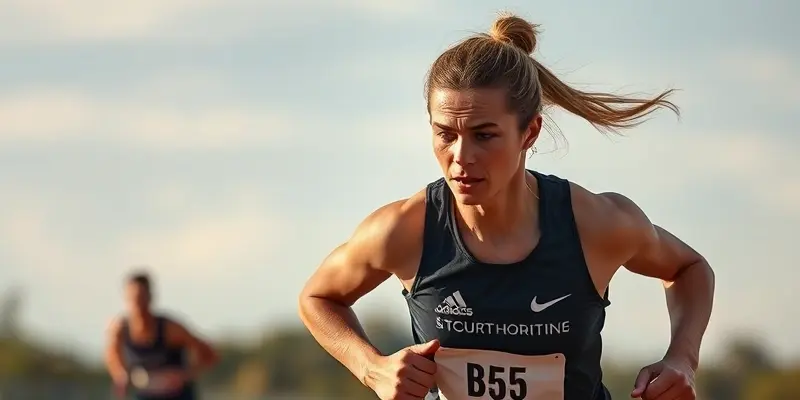Powerlifting Recovery & Injury: Proven Strategies for Every Lifter
Staying strong in the gym isn’t just about lifting more. It’s about lifting longer—safely, smartly, and consistently. Whether you’re squatting for the first time or chasing a new deadlift PR, understanding recovery and injury prevention is your best investment in lifelong progress. Today, let’s break down practical, expert-backed strategies to keep every Gympulse member—beginner or pro—healthy and thriving.
Why Injury Prevention & Recovery Matter in Powerlifting
You might be surprised: studies show lower back strains, knee pain, and shoulder issues are the most frequent injuries in powerlifting. Even with great genetics and coaching, no one is immune. The real edge? Knowing how to minimize risks and bounce back better.
For beginners, smart habits now prevent chronic pain later. For advanced athletes, the difference between a season of progress and months on the sidelines often comes down to recovery know-how.
Mastering Form: Your First Defense
Powerlifting is a skill sport. Proper form isn’t just “good advice”—it’s injury insurance!
Squat Like a Pro
- Bar position: Keep it on your upper back, using a low-bar setup for most lifters.
- Stance: A wider stance helps keep your hips and knees aligned.
- Chest up, core braced: Use the Valsalva maneuver—deep breath, tight core before descent.
- Depth: Aim for hips below parallel. No “ego squats.”
- On the way up: Drive through your heels, push knees out, and never let your back fold forward.
Deadlift Details
- Stance: Personalize it—narrow for taller lifters, sumo for shorter ones.
- Bar path: Use your lats like tension cables. Keep the bar close to your shins.
- Back: Neutral spine always. No rounding or “cat-back” pulls, even if the weight feels light.
- Top position: Stand tall, shoulders back, knees locked out.
Bench Press Basics
- Five contact points: Head, shoulders, glutes on the bench, and both feet on the floor.
- Scapular retraction: Squeeze your shoulder blades for built-in shoulder protection.
- Bar path: Lower to mid-chest, press up with every muscle engaged. No bouncing!
Quick Test:
Record a set and watch for rounded backs, knees caving in, or shifting glutes. If you spot them, dial the weight back and perfect your basics.
Injury Prevention: Beyond the Big Three
Sure, solid form leads the way, but consider these extra layers of armor:
- Warm-Up Wisely: Dynamic stretching, band work, and hip/shoulder mobility primes your muscles and joints.
- Accessory Drills: Think paused squats, tempo lifts, and band pull-aparts. These build stable, resilient movement patterns.
- Gear Up, Don’t Gear Down: Use resistance bands for activation, sleeves and wraps for joint support, and lifting belts when hitting heavy attempts.
- Progress, Don’t Leap: Build weight gradually. Those “10kg jump” ego days are also prime injury days.
Recovery: The Secret to Sustainable Gains
Rest is when magic happens. Here’s how to optimize your downtime:
Nutrition:
- Prioritize protein to rebuild muscle tissue.
- Include anti-inflammatory foods—think salmon, walnuts, leafy greens.
- Don’t skimp on micronutrients. A multivitamin covers bases most diets miss. For detailed science-based strategies, see our post on the Power of Vitamin C in Recovery and Injury Prevention.
Active Recovery:
- Foam roll tight spots and try massage tools for myofascial release.
- Use mobility drills. For lifters, a daily 5 minutes of hip and shoulder movements pay huge dividends.
- Compression sleeves and cold packs can accelerate recovery post-heavy sessions.
Tech Tools:
- Use apps for tracking your sessions. Reviewing lift videos helps spot form issues before they become injuries.
- Wearables that monitor recovery (like heart rate variability) can guide your training intensity.
Motivation When Injured: Bouncing Back Stronger
Setbacks happen—even to champions. What matters most is mindset:
- Set Mini Goals: Can’t squat? Focus on single-leg work or core stability.
- Visualize Success: Mental reps matter. Picture a perfect lift while you recover with techniques like visualization for healing.
- Lean on Community: Your training partners and coaches can be your biggest cheerleaders. Ask for tips, share challenges, and celebrate small victories.
Summary Table: Quick Reference
| Tip | Action | Benefit ||———————–|————————|——————————-|| Squat Depth | Hips below knees | Prevents knee strain || Deadlift Spine | Neutral back position | Reduces lower back injury || Progressive Overload | Small weight increases | Steady, safe strength gains || Nutrition Focus | Protein, micronutrients| Faster recovery || Recovery Tools | Foam rollers, bands | Less soreness, better mobility|| Peer Feedback | Video, coaching review | Early error correction |
Final Thought
No matter where you are on your lifting journey, investing in your recovery and injury prevention is your power move. Your future self—stronger, pain-free, and still crushing goals—will thank you. Stay smart, stay safe, and let’s keep lifting for life!
Have questions or want to share your own recovery win? Drop your story in the Gympulse Club comments—we’re all in this together.

